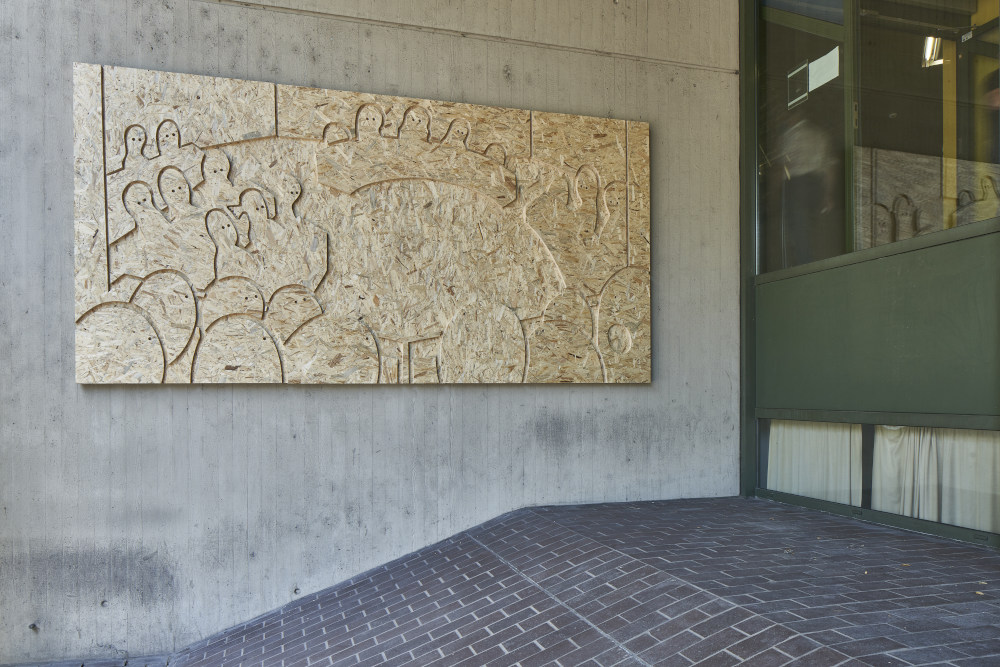The main proceedings against the five defendants charged with the crimes committed by the National Socialist Underground (NSU) were held before the Higher Regional Court of Munich from 2013 to 2017. This far-right terror group had committed a string of murders and other violent attacks in Germany for years. The judgment, which runs to more than 3,000 pages, was pronounced a few weeks ago, bringing the first stage of the trial to a close. And yet, there are still many unanswered questions about the NSU and its deeds.
Artist Sebastian Jung attended the NSU trial in court, making pencil sketches of the proceedings. His drawings reflect the observer’s view. The media fanfare that accompanied the start of the trial ebbed as the proceedings dragged on. At times, questions about the main defendants’ clothing and hairstyles seemed more vivid than the crimes themselves, or the ways in which the police and domestic intelligence service were entangled in the laborious investigations.
Jung has crafted a relief measuring 2 by 4 meters for the façade of the building based on his drawings of the proceedings, made in the courtroom of the criminal justice center in Munich. The work explores the unanswered questions that remain after the trial, along with the fundamental way that the acts of the NSU are treated. The center of the relief is a large blank space, marking the place where witnesses typically testify. This omission is Jung’s way of placing the crimes beyond visual representation. By presenting the view from the public gallery inside the courtroom, he also questions the public view of the proceedings, in which some participants, such as joint plaintiffs, were not visible enough.
The work turns the outdoors into a new venue, calling for an urgently needed ongoing public debate of the events. It also urges viewers to rethink the as yet unknown long-term political and social ripple effects of the NSU complex. While the artist is especially interested in the structural issues behind the complex, the Munich Documentation Centre for the History of National Socialism has an additional aim in its intervention: to point out the lack of a central public place of remembrance of this crime spree, the largest series of murders committed by far-right extremists in the history of postwar Germany.
The relief on the façade and other drawings in the interior of the criminal justice center are part of the current exhibition titled Tell me about yesterday tomorrow, funded by the German Federal Cultural Foundation, which is shown at the Munich Documentation Centre for the History of National Socialism until October 18, 2020. This interdisciplinary exhibition project focuses on contemporary art, bringing art, scholarship, remembrance work, education, and culture together. More than 40 international artists are featured with works exploring the meaning of the past and how it ties in to the present day. Many of the works on display are new works dealing with current topics. These include Jung’s drawings, which show his observations of visitors to the Dachau and Buchenwald concentration camp memorials, a large-scale demonstration of “concerned citizens” in Chemnitz in 2018, and the video of the perpetrator of the right-wing extremist attack in Halle on October 9, 2019.
Jung is interested in the emotional mobilization of mass groups, spurred on by political rhetoric that creates simple images of the enemy. His portraits are less of the individual people, whom he shows in a distorted or cartoonish way, than of their feelings as he experienced them in the situation. Jung just recently published Europe Ice Weather, a sharp-eyed observation of society during the coronavirus pandemic (eiswetter.eu). Sebastian Jung (born in Jena in 1987) grew up in Winzerla, a settlement of typical East German prefabricated concrete slab buildings in Jena that became known as the starting point for the radicalization of the three members of the NSU. His 2015 work Winzerla was his first artistic work on the NSU. Jung lives and works in Leipzig.


